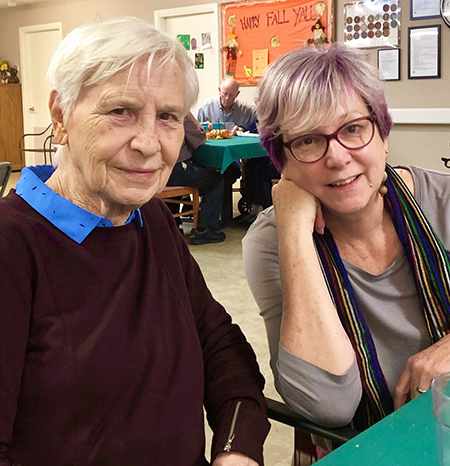Coronavirus changes how we bring closure
(During this time of COVID-19 and social distancing, we’ve been forced to alter many aspects of our lives. This includes how we deal with death and honoring our loved ones. In this essay, Susan Cummings describes what that meant for her family.)

Funerals are for the living is an idea I’ve long embraced. Remembering a life and grieving its end brings closure, and in time comfort and solace to those who loved the person who has died. When we lose someone, we grieve privately. Yet the public rituals of saying goodbye serve the bonds of community and support the individuals who remain. None of us like funerals, but we attend them because it’s the right thing to do.
Friends and relatives visit the grieving family at visitations, we sign a guest book, talk with friends, share stories about the deceased, admire photos, and read the obituary. We cry and laugh as we embrace those who loved the deceased. We share memories and pass the tissues. One by one, friends speak words of comfort to each other and to the bereaved family. Then the funeral, a few words at the grave site, and a community of helping hands — usually women of the church — provide a nourishing meal for mourners who’ve no appetite, but who cling to each other and make sure everyone’s plate is full. As the crowd dwindles, we seek out the family for one last assurance that they are not alone and that they are loved.
The familiarity of public rituals, which vary from culture to culture, guide us through those first few days of mourning. They certainly did when my 84-year-old dad died in 2018. At such a deeply personal time, mourners count on the rest of the world spinning on as they come to grips with their profound loss.
Such comfort was not available to my family when our 84-year-old mom died just 17 months later. Grief in the time of COVID-19 is so different and so lonely.
Florence Cummings died March 16, three days after the governor declared a state of emergency because of the pandemic. She had been expected to recover at home after hip surgery because she was in relatively good health. “Home” had become a small assisted living facility two years earlier. There she eventually became comfortable and was a lively favorite in the new community that she never really wanted to enter. She tried to make the best of it most days.
But during the brief time Mom was in the hospital, the world began wobbling on its axis. Public gatherings were scaled down or canceled in an effort to slow the spread of the virus. Soon no groups larger than 50 were allowed; then groups no larger than 10. While we ministered to her and tried to ease her suffering, the world, like she, was beginning to shut down.
When my brothers and I met with the funeral home director, we knew a funeral as uplifting and heartening as the one for our father would not be possible. How could we ask our friends and family to endanger themselves at a funeral? We would not. How could we manage our suffering without the support of friends and family? With great sadness. Whose helping hands would prepare a meal for the remaining us after the service? A caterer.
In an era of social distancing, I found comfort in my online community. Facebook condolences and donations to the Alzheimer’s Association rolled in and tears rolled down my cheeks. Cards of sympathy arrived in the mail. The hugs and laughter and stories I had hoped to experience at my mom’s funeral were transformed into messages and phone calls.
To others who find themselves planning funerals in the time of COVID-19 and social distancing, weep and grieve as you must. But know that if you reach out, someone on social media will reach back. In the absence of hugs and homemade casseroles from the neighbors, comfort each other with words, music and art.
— Susan Cummings








